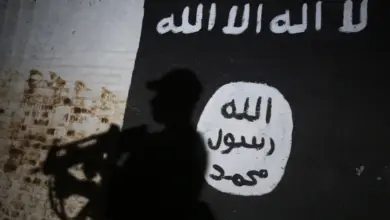
Some in the US intelligence community warn that ISIS may be working to build the capability to carry out mass casualty attacks, a significant departure from the terror group's current focus on encouraging lone wolf attacks, a senior US intelligence official told CNN on Friday.
To date, the intelligence view has been that ISIS is focused on less ambitious attacks, involving one or a small group of attackers armed with simple weapons. In contrast, Al-Qaeda in the Arabian Peninsula, or AQAP, has been viewed as both more focused on — and more capable of — mass casualty attacks, such as plots on commercial aviation. Now the intelligence community is divided.
Meanwhile, the US effort to train rebels in Syria to fight ISIS is having trouble. The few rebels that the US has put through training are already in disarray, with defense officials telling CNN that up to half are missing, having deserted soon after training or having been captured after last week's attack by the Al-Qaeda-affiliated Nusra Front attack on a rebel site.
One defense official admitted to CNN that "they are no longer a coherent military unit," and Pentagon officials acknowledged the approach of how to support the rebels has to change.
The potential change within ISIS itself is driven — in part — by a broadening competition between ISIS and AQAP for attention and recruits.
That same competition was evident this week when AQAP bomb-maker Ibrahim al-Asiri made an online appeal to supporters to carry out lone wolf attacks.
"I think they're taking a lot of the new recruits that don't have time to train, who have not been brought up in their systems, and they're using them to create the type of mass casualty which produces the media attention, which is exactly what they want, that shows they're still powerful," said CNN Military analysts Lt. Gen. Mark Hertling. Meanwhile, ISIS is continuing to draw large numbers of new foreign recruits. US intelligence assesses that the formidable flow of foreign fighters to Syria and Iraq has not abated.
Currently, the total number of ISIS fighters is between 20,000 and 30,000, similar to the levels when the air campaign began, despite thousands of ISIS fighters believed to have been killed in coalition air strikes.
Turkey, the prime transit point into Syria, is still struggling to stem the flow. However, the US believes its agreement to allow US air strikes from a Turkish air base and to help establish a safe zone indicate Istanbul is stepping up.
The administration is also claiming gains on the ground.
"In Iraq, ISIL has lost the freedom to operate in some 30 percent of the territory that they held last summer," White House spokesman Josh Earnest told reporters Friday, using another name for ISIS. "Overall, ISIL has lost more than 17,000 square kilometers of territory in northern Syria."




